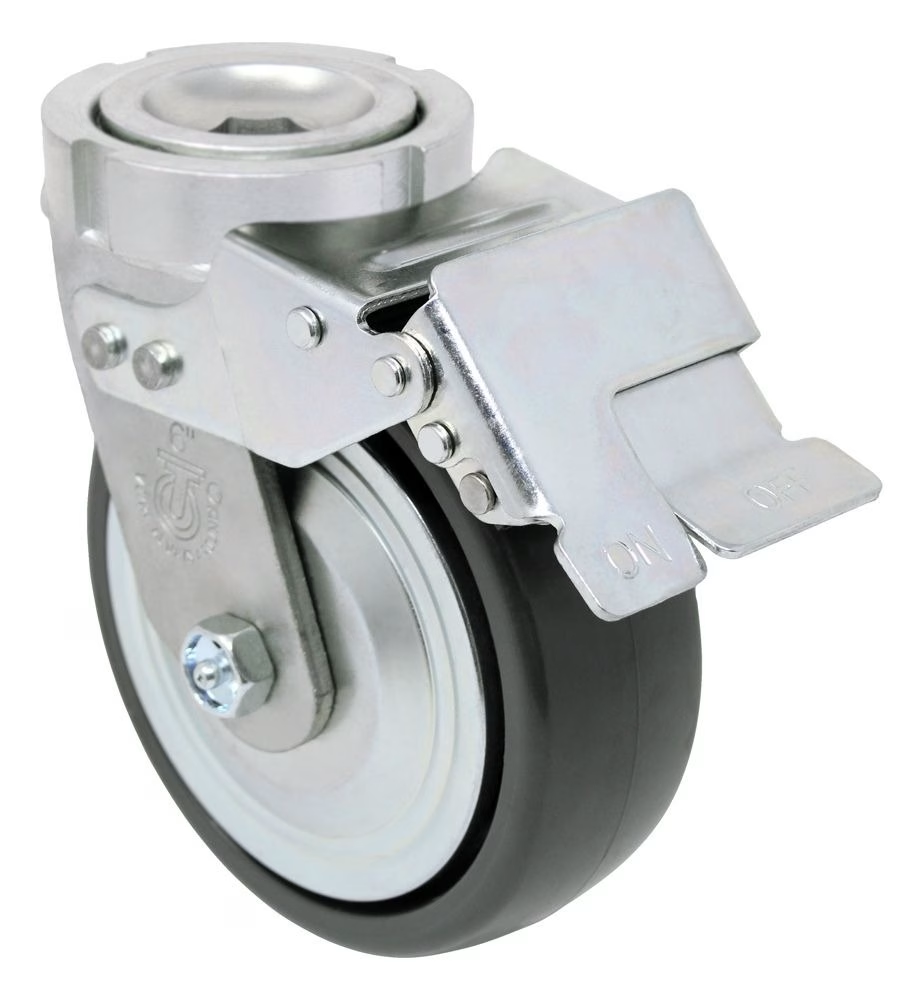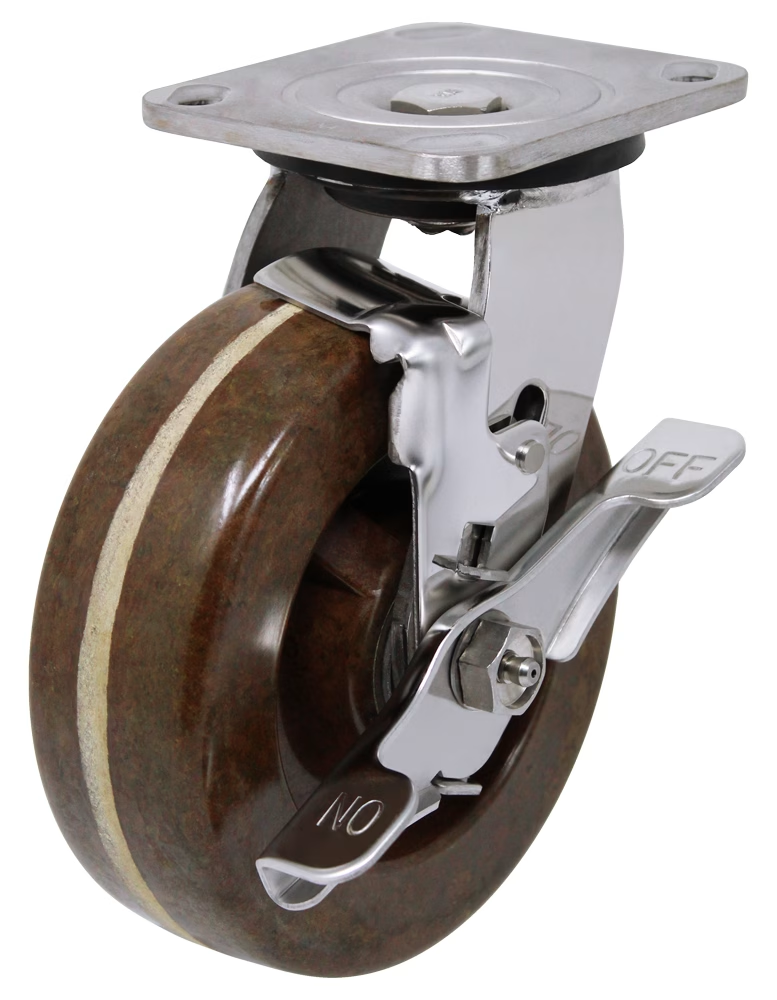



 October 7 2025
October 7 2025 Moving heavy equipment safely depends on more than strong wheels. Without brakes, carts drift, shop stands roll, and hospital beds slide. Brakes for casters hold equipment steady so work can be done without risk. Choosing the best brakes for casters depends on how much weight you need to carry, what type of floor you roll across, and how much control your job site requires.
Top lock brake casters use a metal brake shoe that clamps against the wheel tread. Once engaged, the wheel cannot roll. Many designs also lock the swivel, which is the turning joint above the wheel. That stops both rolling and rotating at the same time.
Main points about top lock brake casters:
Top lock brake casters are found across many industries because they give simple control with easy foot operation. Common uses include:

Safety and stability:
Maneuverability and control:
There are two common types of top lock brake casters, each serving a different need:
Swivel casters with top lock brakes:

Rigid casters with top lock brakes:



While top lock brakes stop the wheel, total locking casters hold both the wheel and swivel at the same time with one action. This adds an extra layer of safety for the heaviest equipment.
For jobs that need the best brakes for casters, total lock systems are often the answer. At Caster City you can find options like:
Picking the right brake system comes down to three main checks: load, floor, and mounting style.
Weight capacity:
Floor type:
Mounting:
Industrial casters are not one-size-fits-all. Options include:
When comparing, remember that total locking plate casters give the highest stability and are considered the best brakes for casters in demanding environments.

Since 1977, Caster City has supplied high-capacity casters, wheels, and brakes for every type of industry. Their online selection makes it simple to filter by load rating, wheel material, and brake type. Expert staff are available by phone at 800-501-3808 to guide you through selecting total locking plate casters, top lock brakes, or stainless steel caster options.
Always follow site rules when using industrial casters. Wear protective equipment and block heavy gear before performing service or repair. The best brakes for casters keep workers safe, but safe handling practices must always be followed.
Top lock brake casters improve control and stop rolling equipment where safety matters most. For maximum hold, total locking plate casters and total locking stem casters keep both wheel and swivel from moving.
Focus on three points when choosing brakes for casters:
With the right casters, workbenches, hospital carts, and warehouse racks roll when needed and stay put when locked. A careful choice today leads to smoother operations and lower costs tomorrow.